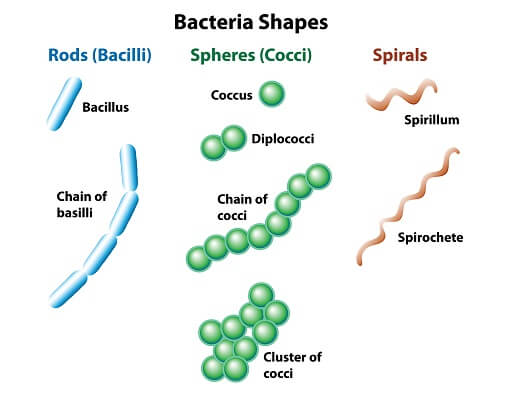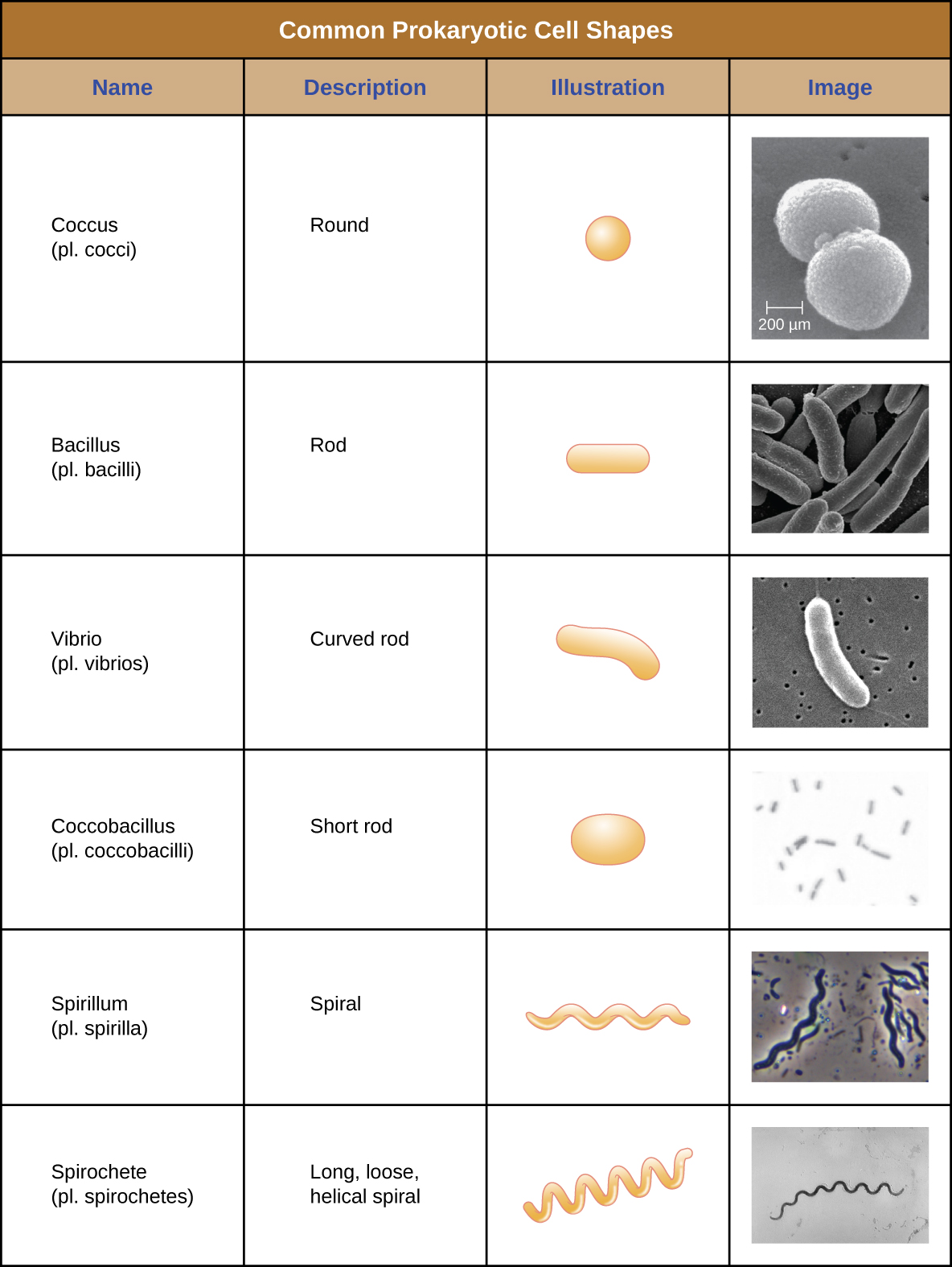14 Which of the Following Are Shapes of Prokaryotic Cells
They are of different shapes and sizes pretty much like bricks of the buildings. The three basic bacterial shapes are coccus spherical bacillus rod-shaped and spiral twisted however pleomorphic bacteria can assume several shapes.

Unique Characteristics Of Prokaryotic Cells Microbiology
These theoretical considerations are supported by the behavior of filamentous E.

. Shape of Bacterial Cell. Energy usage Brownian forces and requirements for following chemical gradients force highly motile bacteria into a narrow range of optimal sizes and rod shapes 518. Unlike prokaryotic cells in which DNA is loosely contained in the nucleoid region eukaryotic cells possess a nucleus which is surrounded by a complex nuclear membrane that houses the DNA genome Figure 3By containing the cells DNA the nucleus ultimately controls all activities of the cell and also serves an essential role in reproduction and heredity.
Cyanobacteria do not possess flagella as are found in many other bacterial or phytoplankton taxa. This is usually temporally separated from the mitotic phase by non synthetic periods referred to as gap 1 G1 and gap 2 G2 occurring before and after the S phase respectively The cell prepares for DNA. A Nonmetric multidimensional scaling NMDS ordinations based on weighted UniFrac distances matrices of bacterial communities for all samples n 684 maize samples in 2016 n 216 and 2017 n 252 and wheatbarley samples in 2017 n 216XC site Xuchang.
Some taxa include cells of dif-ferent shapes. Cyanobacterial cells can be spherical ellipsoid barrel-shaped cylindrical conical or disc-shaped. DNA Synthesis and the Cell Cycle In animal cells including human cells the replication of the DNA genome occurs only during the synthetic or S phase.
Our body is made up of cells of different shapes and sizes. Cells are the lowest level of organisation in every life form. Thus a few bacteria are much larger than the average eukaryotic cell typical plant and animal cells are around 10 to 50 µm in diameter.
Host dominates over environment in shaping the crop microbiome. Coli cells which though motile and chemotactic move slowly and cannot tumble to change direction 19. From organism to organism the count of cells may vary.
Cells are complex and their components perform various functions in an organism. Eukaryotic cells are composed of the following organelles. The nucleus of the cell functions as the genome and genetic information storage for the cell containing all the DNA organized in the form of chromosomesIt is surrounded by a nuclear envelope which includes nuclear pores allowing for the transportation of proteins between the inside and outside of the.
Ily the shape and size of cells subcellular structures and specialised cells Figure 3133.

Prokaryotic Cell Definition Examples Structure Biology Dictionary

3 2 Unique Characteristics Of Prokaryotic Cells Biology Libretexts

No comments for "14 Which of the Following Are Shapes of Prokaryotic Cells"
Post a Comment